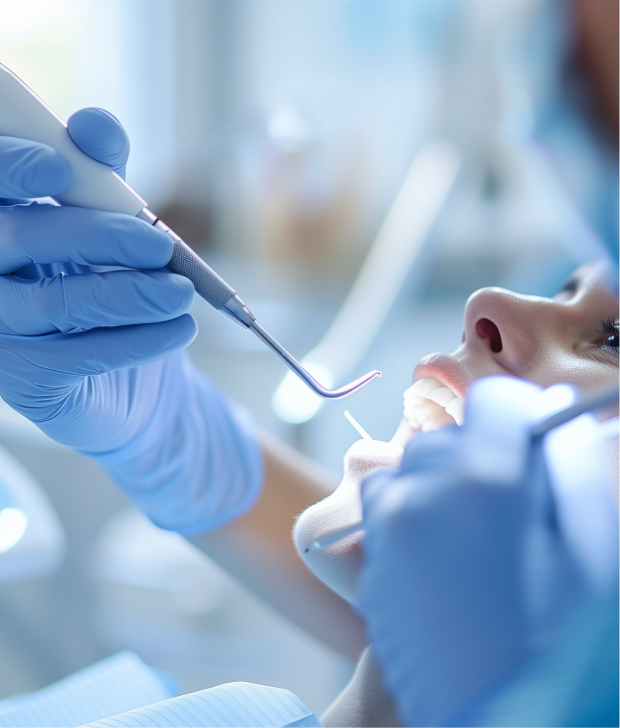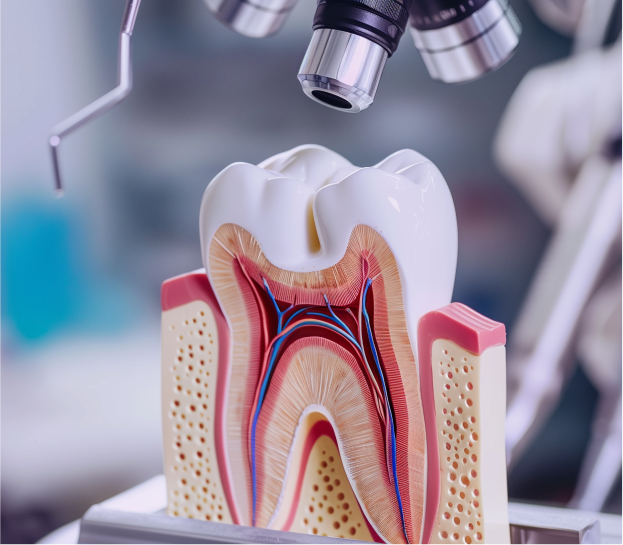

Professional Hard Plaque Removal in South Bay: Expert Dental Calculus Treatment & Tartar Cleaning Services
Learn about professional hard plaque removal and advanced dental calculus treatment options available in South Bay. Discover how expert tartar cleaning can restore your gum health and prevent periodontal disease.
Professional hard plaque removal restores gum health by eliminating dental calculus before it advances into gum disease. Adults in Redondo Beach and the South Bay who struggle with stained teeth, bleeding gums or persistent bad breath gain lasting relief through deep cleaning methods like scaling and root planing. This article explains what hard plaque and calculus are, highlights symptoms and risks of buildup, details professional removal procedures, outlines the benefits of expert tartar cleaning, shares prevention tips, and shows why South Bay Dental Esthetics is the trusted choice.
What Is Hard Plaque and Dental Calculus? Understanding Tartar Formation and Differences
Hard plaque, or dental calculus, forms when soft bacterial film mineralizes on tooth surfaces. Its porous structure binds toxins against enamel and irritates gums, promoting gum disease. Early awareness of how plaque transitions into calculus, and the types of tartar, empowers you to protect your oral health.
National Institute of Dental and Craniofacial Research, "Dental Calculus"
This research provides a foundational understanding of how dental calculus forms, which is essential for understanding the article's discussion of its removal and prevention.
What Is Dental Plaque and How Does It Form?
Dental plaque is a sticky biofilm composed of bacteria, food particles and saliva that adheres to tooth enamel. Plaque bacteria metabolize sugars, producing acids that erode enamel and inflame gums. Daily brushing and flossing disrupt plaque formation, preventing its mineralization into hardened calculus.
Plaque's accumulation typically begins within hours of cleaning. As biofilm density increases, acids concentrate near the gumline, setting the stage for mineral deposits and the next stage of tartar buildup.
How Does Plaque Harden into Dental Calculus (Tartar)?
Plaque hardens into calculus through a process called mineralization, where saliva's calcium and phosphate ions crystallize within the bacterial matrix. This transformation can occur within 24–72 hours of plaque formation and accelerates as calcium levels in saliva rise. Once mineralized, calculus adheres firmly to teeth and cannot be removed by brushing alone.
Calcium deposition in the plaque structure creates a rough surface that attracts further bacterial colonization, compounding the risk of gum inflammation and periodontal disease.
What Are the Differences Between Plaque and Calculus?
Below is a comparison of plaque and calculus attributes to clarify their distinctions.
Calculus's mineralized structure resists at-home cleaning, making professional intervention essential for gum and tooth preservation.
What Types of Dental Calculus Exist? Supragingival vs. Subgingival
Before planning treatment, it's important to distinguish the two main calculus locations:
Supragingival calculus often forms near salivary ducts on lower front teeth, while subgingival deposits hide under the gumline, increasing risk of periodontal pockets and bone loss.
What Are the Symptoms and Risks of Hard Plaque Buildup? Signs You Should Not Ignore
When dental calculus remains unaddressed, it triggers gum irritation, infection and systemic health effects. Recognizing early symptoms guides timely professional care and prevents irreversible damage.
How Can You Recognize Tartar Buildup on Your Teeth?
You can identify tartar buildup by visible yellow-brown deposits along the gumline or between teeth. Common indicators include:
- Persistent bad breath despite brushing
- Rough tooth surfaces felt with tongue or floss
- Staining that resists whitening toothpaste
These signs reveal areas where hardened plaque anchors bacteria and acids that inflame gums.
What Are the Early Signs of Gum Disease Caused by Tartar?
Tartar-induced gingivitis presents with:
- Tender, swollen gums that bleed when brushing
- Gum redness and puffiness around tooth margins
- Mild gum recession exposing tooth roots
Spotting these symptoms early enables intervention through professional cleaning and targeted oral hygiene.
How Does Untreated Calculus Lead to Periodontitis and Tooth Loss?
If calculus remains under the gumline, it deepens periodontal pockets and fosters anaerobic bacteria. This progression causes:
- Pocket Formation – Gums detach from teeth as inflammation worsens.
- Bone Resorption – Bacterial toxins degrade jawbone tissue supporting teeth.
- Tooth Mobility and Loss – Advanced bone loss results in loose or missing teeth.
Effective calculus removal stops this chain reaction, preserving structure and function.
American Academy of Periodontology, "Gum Disease"
This citation supports the article's claims about the progression of gum disease and the importance of professional intervention to prevent severe outcomes.
Can Hard Plaque Affect Overall Health Beyond Your Mouth?
Unchecked tartar contributes to systemic inflammation that links to cardiovascular disease, diabetes control issues and respiratory infections. Oral bacteria can enter the bloodstream, promoting arterial plaque formation and exacerbating chronic conditions. Prioritizing professional removal supports both oral and whole-body well-being.
What Professional Procedures Are Used for Hard Plaque and Tartar Removal in South Bay?
South Bay Dental Esthetics employs specialized cleaning methods to remove calculus safely and thoroughly. These deep-cleaning procedures restore gum health and prevent further disease.
What Is Scaling and Root Planing? Deep Cleaning Explained
Scaling and root planing is a non-surgical deep-cleaning procedure that removes calculus from tooth surfaces and root areas below the gumline. It smooths root surfaces to discourage bacterial re-adhesion and promote gum reattachment. Patients experience reduced inflammation and improved periodontal health.
The process involves ultrasonic instruments to break up deposits followed by manual scaling for precise removal. Local anesthesia ensures comfort during treatment.
American Dental Association, "Scaling and Root Planing"
This citation provides information on the professional procedures used for hard plaque removal, which is a central topic of the article.
How Does Full Mouth Debridement Work for Heavy Tartar Buildup?
Full mouth debridement is a comprehensive cleaning method designed for patients with extensive calculus accumulation and severe inflammation. It clears thick deposits both above and below the gumline to enable accurate periodontal evaluation and facilitate subsequent treatment planning.
This approach uses advanced piezoelectric scalers and curettes to clear hardened tartar effectively, preparing the mouth for targeted periodontal therapy.
What Advanced Technologies Are Used for Gentle Plaque Removal?
Ultrasonic scalers generate high-frequency vibrations that fracture calculus with minimal scraping pressure. Laser periodontal therapy complements scaling by targeting bacteria in periodontal pockets and accelerating tissue healing. These innovations reduce discomfort, improve efficiency and protect tooth enamel.
Combined, these technologies ensure thorough removal while preserving surrounding tissues for faster recovery.
Who Performs Hard Plaque Removal? Role of Dental Hygienists and Dentists
Dental hygienists are trained specialists in professional cleanings, skilled at ultrasonic and manual calculus removal, and at educating patients on home care. Periodontists and general dentists oversee complex cases, perform root planing under anesthesia and manage periodontal health. This team approach guarantees safe, expert treatment aligned with your needs.
What Can You Expect During Your Hard Plaque Removal Appointment?
Your appointment begins with a periodontal evaluation and digital x-rays to assess bone levels and pocket depths. Next, targeted scaling and root planing sessions remove calculus in quadrants or full-mouth visits. Post-treatment, the hygienist polishes teeth, applies fluoride and provides tailored after-care instructions. Comfort options include topical anesthesia and post-op rinses to minimize sensitivity.
A follow-up visit ensures gum healing and measures treatment success through pocket depth reduction.
What Are the Benefits of Professional Hard Plaque Removal and Dental Calculus Treatment?
How Does Professional Cleaning Prevent Gum Disease and Cavities?
Removing hardened plaque eliminates bacterial reservoirs that cause gingivitis and enamel demineralization. Smooth root surfaces and polished enamel resist new biofilm accumulation, lowering the risk of cavities and halting periodontal disease progression.
Can Removing Tartar Improve Your Breath and Smile Appearance?
Tartar elimination eradicates odor-causing bacteria lodged under the gumline and between teeth. Polished tooth surfaces reflect light more evenly, enhancing whiteness and boosting confidence in social and professional interactions.
How Does Hard Plaque Removal Protect Your Overall Health?
Professional scaling and root planing disrupt systemic inflammatory cycles by removing oral bacterial sources. This intervention supports cardiovascular health, assists in blood sugar management for diabetic patients and reduces risks of respiratory infections by clearing oral pathogens.
What Are the Long-Term Cost Savings of Regular Professional Cleanings?
Investing in routine deep cleaning prevents costly restorative treatments such as periodontal surgery, tooth replacement or full-mouth rehabilitation. Maintaining healthy gums and teeth reduces emergency visits and insurance claims, delivering significant savings over a lifetime.
How Can You Prevent Future Hard Plaque and Tartar Buildup? Expert Oral Hygiene Tips
Sustaining calculus-free teeth relies on effective daily habits and professional monitoring.
What Daily Oral Care Practices Help Prevent Calculus Formation?
A consistent regimen of brushing twice daily with a fluoridated toothpaste, daily flossing and an antiseptic mouthwash interrupts biofilm development.
- Brush for two minutes, covering all tooth surfaces and gum margins.
- Floss along the gumline to remove interproximal debris.
- Rinse with a chlorhexidine or essential-oil mouthwash for bacterial control.
These habits minimize mineralization opportunities for plaque.
Why Are Regular Dental Check-Ups Essential for Plaque Control?
Biannual dental visits allow hygienists to catch early plaque accumulation and remove nascent calculus before it hardens. Professional exams track pocket depths and gum health, guiding timely interventions and preventing advanced periodontal complications.
How Does Diet Influence Plaque and Tartar Development?
Diets high in sugar and refined carbohydrates feed oral bacteria, increasing acid production and accelerating plaque growth. Crunchy fruits and vegetables stimulate saliva flow and mechanically clean teeth. Drinking water after meals neutralizes acids and washes away food particles.
What Lifestyle Habits Should You Avoid to Reduce Tartar Risk?
Smoking and tobacco use impair gum circulation and salivary defenses, promoting plaque retention and calculus formation. Excessive alcohol consumption dries the mouth, reducing saliva's protective minerals. Prioritizing tobacco cessation and hydration supports a balanced oral environment.
Why Choose South Bay Dental Esthetics for Your Hard Plaque Removal Needs?
South Bay Dental Esthetics combines specialist expertise, modern technology and personalized care to deliver exceptional plaque removal outcomes in Redondo Beach.
What Makes Our Dental Calculus Removal Services Unique in South Bay?
Our multi-specialty team of general dentists, a periodontist and dental hygienists collaborates on tailored treatment plans. Proprietary comfort protocols, including noise-reducing earbuds and topical anesthetics, ensure a relaxing experience during deep cleaning procedures.
How Do We Ensure Patient Comfort During Tartar Cleaning?
From digital pre-visit assessments to calming operatory environments with warm blankets and neck pillows, every detail focuses on patient ease. We offer nitrous oxide sedation and post-treatment care kits to manage sensitivity, fostering trust and reducing dental anxiety.
What Advanced Techniques and Technologies Do We Use?
We utilize ultrasonic scalers with micro-tip attachments for precise calculus removal and diode lasers for bacterial decontamination. High-definition intraoral cameras guide targeted cleaning and allow real-time patient education on treatment progress.
How Can You Schedule Your Professional Hard Plaque Removal Consultation?
To reserve your deep-cleaning appointment at our Redondo Beach clinic, visit our Book an Appointment page. Our online form and friendly staff make scheduling fast and convenient, so you can start protecting your smile right away.
What Are the Most Frequently Asked Questions About Dental Calculus and Hard Plaque Removal?
Can You Remove Hard Plaque at Home or Is Professional Cleaning Necessary?
Home care can disrupt soft plaque but cannot eliminate mineralized calculus. Professional scaling and root planing remain the only reliable methods for removing hardened tartar and restoring healthy gums.
How Often Should You Get Professional Tartar Cleaning?
Most patients benefit from professional cleanings every six months. Individuals with periodontal risk factors—such as smokers or those with diabetes—may require deep-cleaning visits every three to four months to maintain optimal gum health.
Does Scaling and Root Planing Hurt? What About Pain Management?
Scaling and root planing is well tolerated under topical or local anesthesia. Many patients report minimal discomfort as ultrasonic instruments and gentle manual tools remove deposits. Post-procedural sensitivity typically subsides within a few days.
How Much Does Professional Hard Plaque Removal Cost in South Bay?
Cost varies based on the extent of tartar buildup and whether full-mouth debridement is required. Most insurance plans cover periodontal cleaning. Our team provides personalized estimates and works with dental benefits to maximize coverage.
Are There Any Risks or Side Effects of Dental Calculus Treatment?
Professional scaling and root planing are safe and non-invasive. Temporary sensitivity or minor gum bleeding may occur but resolve quickly with recommended after-care. Our practitioners monitor healing and adjust home-care protocols to ensure comfort.
South Bay Dental Esthetics is committed to delivering expert hard plaque removal and dental calculus treatment that transforms oral health and enhances smiles. By understanding tartar formation, recognizing risks, and choosing specialized care, you invest in lasting gum stability and overall well-being. Schedule your consultation today to experience advanced tartar cleaning in Redondo Beach and take control of your dental health.


